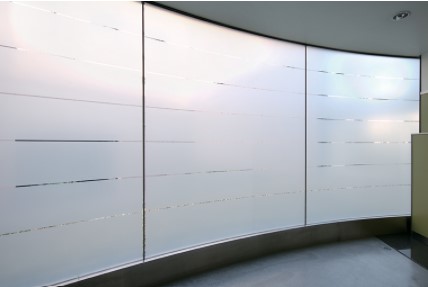In a world where energy efficiency and environmental consciousness are at the forefront of technological advancements, heat-rejection window films have emerged as silent heroes in the battle against soaring temperatures. These innovative films promise to keep interiors cool and boast a wealth of scientific wonders behind their functionality. This blog will delve into the intricate details of heat-rejection window films, unraveling the scientific principles that make them essential to modern architecture.
The Basics of Heat Rejection
Solar heat gain refers to the increase in temperature caused by the sun’s radiation. When sunlight penetrates windows, it brings with it not only visible light but also infrared radiation, contributing to the overall rise in indoor temperatures. This is particularly noticeable in warmer climates or during the scorching summer months.
Heat rejection window films address the challenge of solar heat gain by acting as a barrier between the exterior environment and the interior space. Unlike traditional windows, these films are designed to selectively filter out specific wavelengths of light, especially the infrared spectrum responsible for heat transfer.
Understanding the Science Behind Window Film
Infrared Radiation and Its Role in Heat Transfer
Infrared radiation, commonly known as heat radiation, is integral to the sun’s energy spectrum. This form of energy contributes significantly to the warming of objects it comes into contact with. Heat rejection window films are engineered to intercept and either reflect or absorb infrared rays, preventing them from entering the building.
How Heat Rejection Films Block or Reflect Infrared Rays
The key to heat rejection window films’ effectiveness is their ability to block or reflect infrared rays. These films are typically constructed using materials that are conducive to inhibiting heat transmission. Some films use metal coatings or nanotechnology to reflect infrared radiation, while others incorporate absorptive materials to dissipate the heat.
Impact of Visible Light Transmission on Energy Efficiency
While the primary goal of heat rejection films is to manage solar heat gain, it’s equally important to consider the impact on visible light transmission. Modern films balance blocking unwanted heat and allowing sufficient natural light to pass through. This enhances energy efficiency and maintains a comfortable and well-lit indoor environment.
Nanotechnology and Advanced Materials
In the realm of heat-rejection window films, modern advancements leverage diverse materials like polyester, dyed films, and ceramics. These materials, coupled with nanotechnology, revolutionize film performance. Nanoparticles, manipulated at the nanoscale, enhance heat rejection precision and control. This combination ensures optimal efficiency without sacrificing visibility. Key points include:
- Materials Exploration:
- Polyester, dyed films, and ceramics for durability and balance.
- Nanotechnology’s Role:
- Nanoparticles enhance control and efficiency.
- Optical Clarity and Transparency:
- High-quality materials and advanced manufacturing prevent distortion.
- Nanotechnology contributes to transparency and heat rejection synergy.
UV Radiation Protection
Harmful Effects of UV Radiation
Beyond the issues of heat, ultraviolet (UV) radiation poses another threat to both occupants and interior furnishings. Prolonged exposure to UV rays can lead to skin damage, fading of furniture and flooring, and other detrimental effects. Heat rejection window films, however, offer a comprehensive solution by blocking a significant portion of harmful UV radiation.
How Window Films Provide UV Protection
The materials used in heat rejection films are designed to absorb or reflect UV rays, preventing them from entering the building. This contributes to a more comfortable and safer indoor environment and helps preserve the integrity of interior décor and furnishings. The protective barrier these films create adds an extra layer of defense against the detrimental effects of UV radiation.
Benefits of UV Protection for Indoor Spaces and Occupants
Incorporating UV protection into heat rejection window films brings numerous benefits. From safeguarding the health of occupants to preserving the longevity of interior furnishings, the holistic approach of these films extends beyond temperature regulation. Businesses and homeowners alike can appreciate the added value of UV protection in creating a healthier and more sustainable living or working environment.
Energy Efficiency and Cost Savings
Quantifying Energy Efficiency Improvements
One of the most compelling aspects of heat rejection window films is their positive impact on energy efficiency. By reducing solar heat gain, these films decrease the workload on cooling systems, leading to lower energy consumption. This, in turn, translates into tangible cost savings on energy bills, making them a wise investment for both residential and commercial properties.
Cost Savings Associated with Reduced Energy Consumption for Cooling
The financial benefits of heat rejection window films go beyond the initial investment. As cooling systems operate more efficiently, the demand for energy decreases, resulting in lower utility bills. Businesses can see a significant return on investment over time, and homeowners can enjoy a more comfortable indoor environment without breaking the bank.
Environmental Impact and Sustainability Considerations
Reducing energy consumption saves money and contributes to a more sustainable future. Heat rejection window films align with the principles of environmental responsibility by promoting energy-efficient practices. As the global push for sustainable living gains momentum, integrating such technologies becomes a crucial step in mitigating the environmental impact of buildings.
 Installation and Maintenance
Installation and Maintenance
Installing heat rejection window films involves a straightforward process: thoroughly cleaning existing windows and applying the film using a specialized adhesive. While DIY installation is an option, professional installation is recommended for precision and optimal performance.
To ensure longevity and effectiveness, follow these maintenance tips:
- Use a soft, non-abrasive cloth or sponge to clean the film regularly.
- Choose mild, non-abrasive cleaning solutions to prevent damage.
- Periodically check for damage, peeling, or discoloration and address issues promptly.
- Use tools designed for window films, like rubber squeegees, to avoid scratches.
- Consider periodic professional maintenance for expert solutions and to maximize the film’s lifespan. Following these steps ensures heat rejection window films’ durability and optimal performance.
By following these installation and maintenance guidelines, users can enhance the durability and performance of heat-rejection window films, maximizing their benefits over the long term.
Considerations for Choosing the Right Window Film
Choosing the right window film requires careful consideration of climate, building orientation, and local regulations. The effectiveness of heat rejection films varies based on these elements, making personalized recommendations crucial. Consulting with professionals in the field ensures that you receive expert guidance, considering the specific challenges your environment poses. Here’s a quick bullet list for easy reference:
- Climate: Evaluate solar heat gain and UV radiation levels based on your region.
- Building Orientation: Consider the direction your building faces for accurate sun exposure assessment.
- Local Regulations: Adhere to regulations governing window films to avoid compliance issues.
- Professional Consultation: Seek advice from experts for personalized recommendations aligned with local conditions.
In conclusion, the scientific wonders behind heat rejection window films reveal a sophisticated technology designed to tackle the challenges posed by solar heat gain and UV radiation. From the materials used in their construction to the application of nanotechnology, these films represent a harmonious blend of innovation and functionality. As businesses and homeowners seek sustainable solutions for energy efficiency and indoor comfort, the science behind heat rejection window films positions them as a crucial component in future architecture. Embracing this technology contributes to cost savings and fosters a more sustainable and comfortable living and working environment for generations to come.




